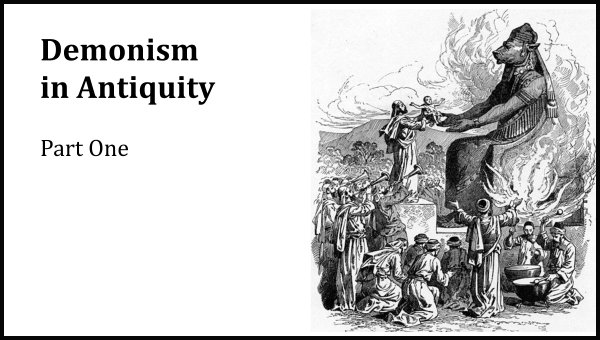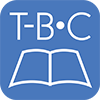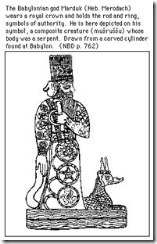By Tyson Thorne

Does he lurk in the shadows? Does he reside in basements and cellars and sewers, staying far away from the light of day? Are leaky pipes and fungi his only company? Is the Prince of Darkness to be likened to a Stephen King antithesis of good; an evil force subject to the night, ensnaring the lonely, the curious, the naïve whenever they cross his liar? Quite the contrary.
Job chapter one reveals the earth is home of the highest demon. He freely roams its interior and surface alike. He is no force of nature. Rather, 1 Peter chapter five describes him as a real, personal and powerful enemy of mankind. It is not dark and dusty places he chooses for home, no. He enjoys all the trappings of power — kingdoms for him to rule, with temples built to his majesty, sanctuaries where men sacrifice their fellows as a blood offering, a garden lit at night by the burning corpses of Christians, and a palace in which to feed his lusty appetites and to lay his head at night. He is a liar, a murderer (John 8), and an angle of light who leads his followers into everlasting darkness.
Our enemy is the great deceiver who wages both a spiritual and mental war (2 Corinthians 10). Often this takes the form of drug dependency, mental illness and spiritual acedia. This is not to say that these conditions are always indicative of demonic involvement, they are not. More often they result from mankind’s own ignorance, deception and rebellion from the Truth. In many ways we are our own worst enemy. The fact that there is also a real enemy as powerful as Lucifer makes the danger that much greater.
Fortunately, we do not fight alone or empty handed. As followers of Jesus Christ we have the indwelling holy spirit, instant access to the throne room of God, and the Lord’s revealed truth. It is our faith in God and the confidence we have in the weapons He’s provided that is our strength. This new day draws us ever nearer to the day of Christ’s triumphant return. May we labor intensely against the devil’s schemes, to restore as much of the image of God in ourselves as possible, and to win as many as possible from the enemy’s camp.
Satan has his own tools, tools for bondage. These tools are (1) ignorance of the truth, (2) deception about the truth, and (3) rebellion from the truth. But we have our own tools, not tools to bind, but tools to loose: (1) knowledge of the truth, (2) the Bible, and (3) submission to Jesus. As followers of the Most High God we are not to be ignorant of the demon world, or their strategies. We do not want to focus too greatly on their perverse practices, for there are spiritual dangers when we study too closely the doctrines of demons. There is equal danger, however in ignoring the existence of demons.
It is not the purpose of this series to provide an exhaustive report on the occult world, but merely to get the Christian “up to speed” on useful knowledge of overcoming Lucifer and his minions. Our first step in this process, is understanding the demonic strategy through the ages. As is stated by Charles Ryrie,
“Much less frequently does the Old Testament refer to demons” (Charles Ryrie, Basic Theology, ©Victor Books 1982).
In fact, there is greater mention of demons in Luke alone than there is in the entire Old Testament. The reason for this is a simple one: rather than being recognized as “demons” they were largely called “gods.” Demons are named in Leviticus 17.7, “They must no longer offer any sacrifices to demons, to whom they prostitute themselves,” and Deuteronomy 32.17, “They sacrificed to demons, which are not God— gods they had not known, gods that recently appeared, gods your fathers did not fear.” Indeed, the use of the terms “demon” and “gods” in the Deuteronomy text indicate that they were interchangeable. In the ancient days, “gods” was the preferred term, while later in history as the Greek world view came to the forefront of modern thinking, the term “demon” became popularized. Probably the higher ranking demons (“rulers and authorities,” Ephesians 6.12) paraded their powers as gods, while the others served their will.
Though the theology of a hierarchy of demons was not a part of Jewish understanding and largely came about in the Greco-Roman period, there were a few distinctions among demons even in the scripts of antiquity. Consider the Epic of Gilgamesh, a dragon, who later took the name Marduk, Baal, Bel, Entemenanki, Merodachai, Merodachai–Baladant All four of these gods were depicted as dragons and likely developed from ancient demon worship. Contrast these dragon-demons with the text of Leviticus 17.7: “…so that they may no longer offer their sacrifices for goat-demons, to whom they prostitute themselves.” Such idols of goat-demons have been found at Ur (see below); even today the goat is often symbol of occult ritual.
Photo Credits: Biblical Archaeology Review, March/April 1997, page 61
Even the ancient American Indians had their dragon-demon, named Quetzalcoatl (a feathered serpent, also known as Kukulkan), to whom they built Akkadian style temples very similar to those found 8,000 miles away in modern Iraq . Examine the similarities in styles below:
Photo Credits: Albert T. Clay, Light on the Old Testament from Babel, © The Sunday School Times 1906
|
|




